Our first Nature Ramble for the year on the 12th February was along the Anglesea River. We walked from the office, comparing both sides of the river.

Group along the path (photo by Gail)
The west side has been mostly cleared of vegetation, but there are still some rushes and sedges growing by the water’s edge. The east side, however, is uncleared and we were able to enjoy the plants specially adapted to grow in saline conditions.
Much of the Moonah, Melaleuca lanceolata, was in flower and we really enjoyed the lovely cream bottle brush blooms.
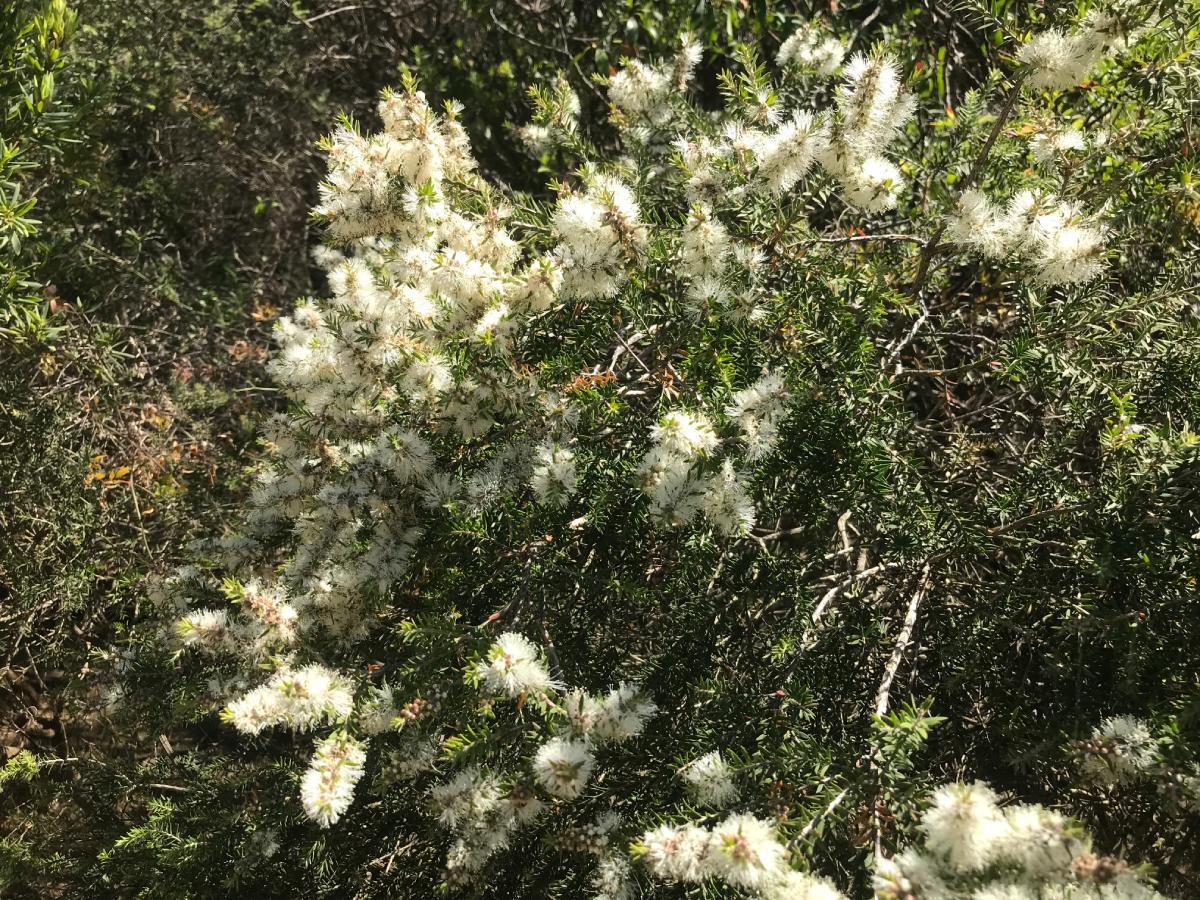
Moonah
The Seaberry Saltbush, Rhagodia candolleana subsp. candolleana, was showing off its bright red berries which gradually become darker as they mature.

Seaberry Saltbush
There were many white daisies scattered throughout the undergrowth – the Grass Daisy – Brachyscome graminea enjoying the grassy wetland.
Hidden in the foliage was the Angled Lobelia – Lobelia anceps. The stems of this plant are square on cross-section, and the tiny flowers are light blue to violet, so small they can be easily overlooked.
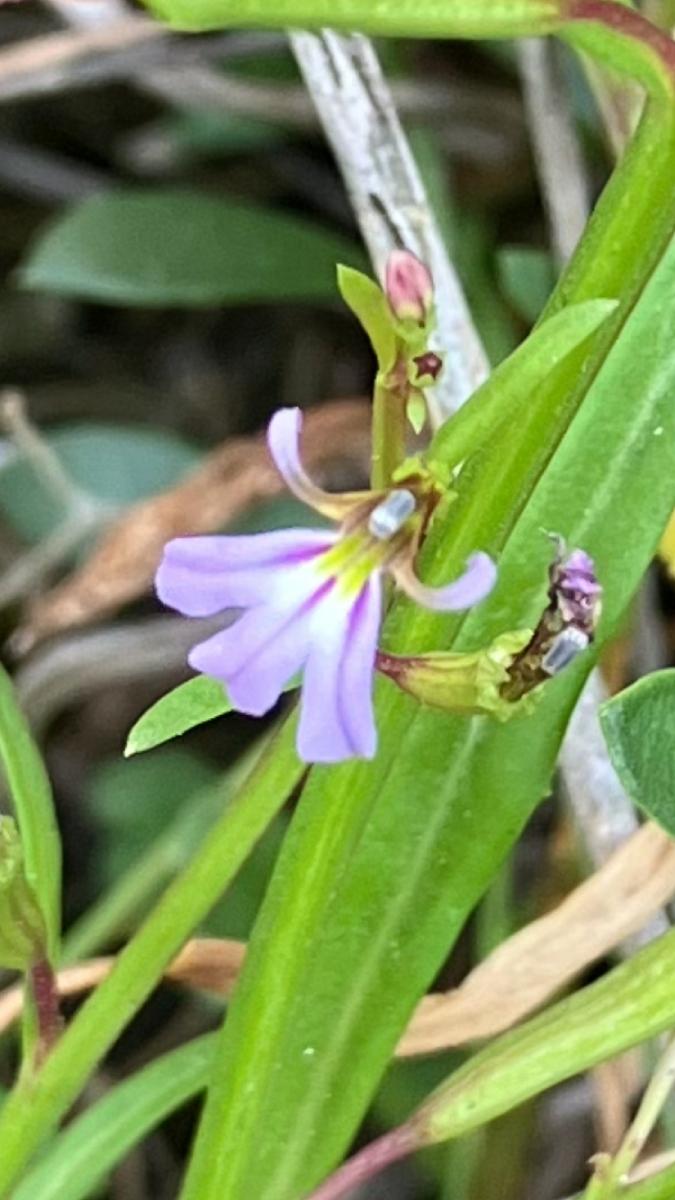
Angled Lobelia (photo by Ellinor)
We were very pleased to see two species of Triglochin. The Water Ribbons – Triglochin procera usually grows in water but we found it in the soil near the water.

Water Ribbons
The second species was Striated Arrow-grass – Triglochin striata, growing in a similar area.
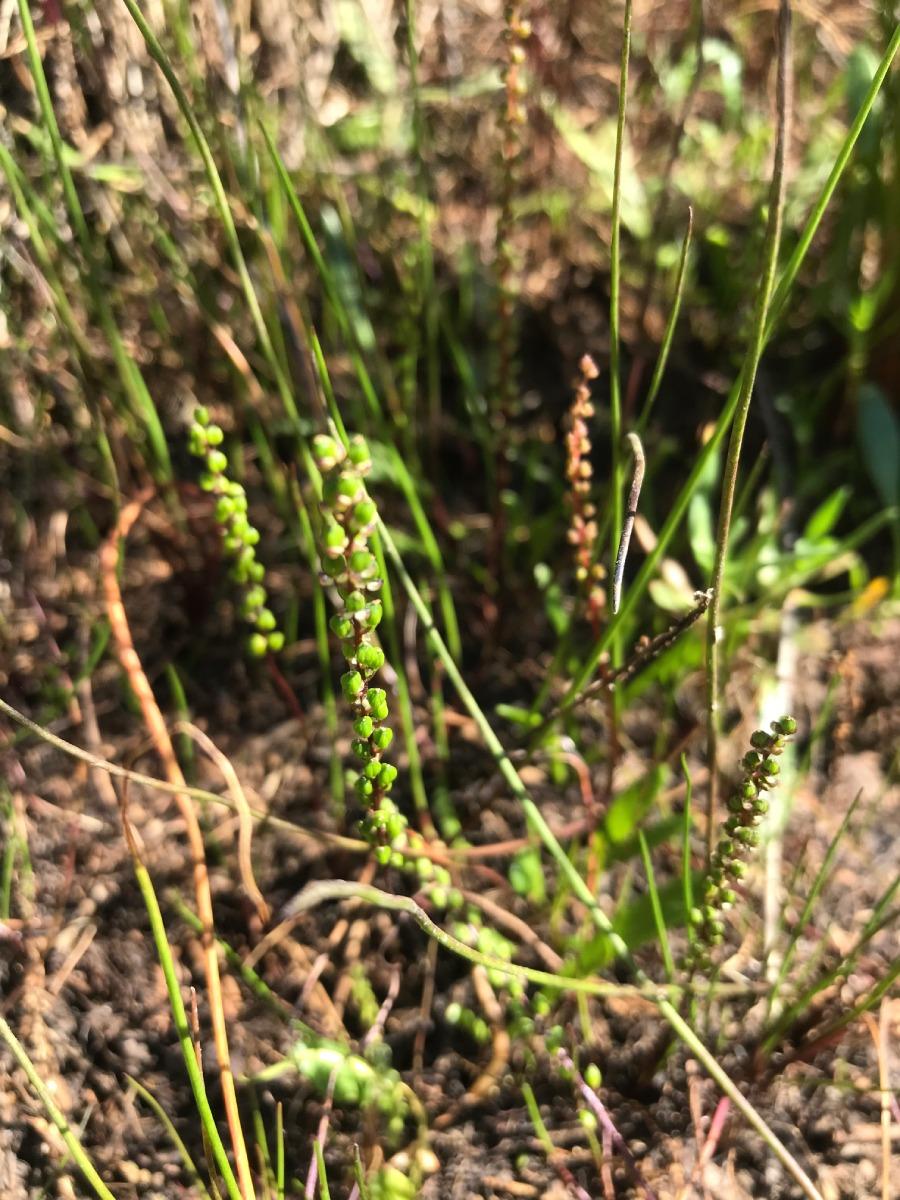
Striated Arrow-grass
There are also two species of native celery growing along the riverbank.
The most common is Sea Celery – Apium prostratum var. filiforme. The leaves are divided and look very similar to the leaves on the celery we eat.
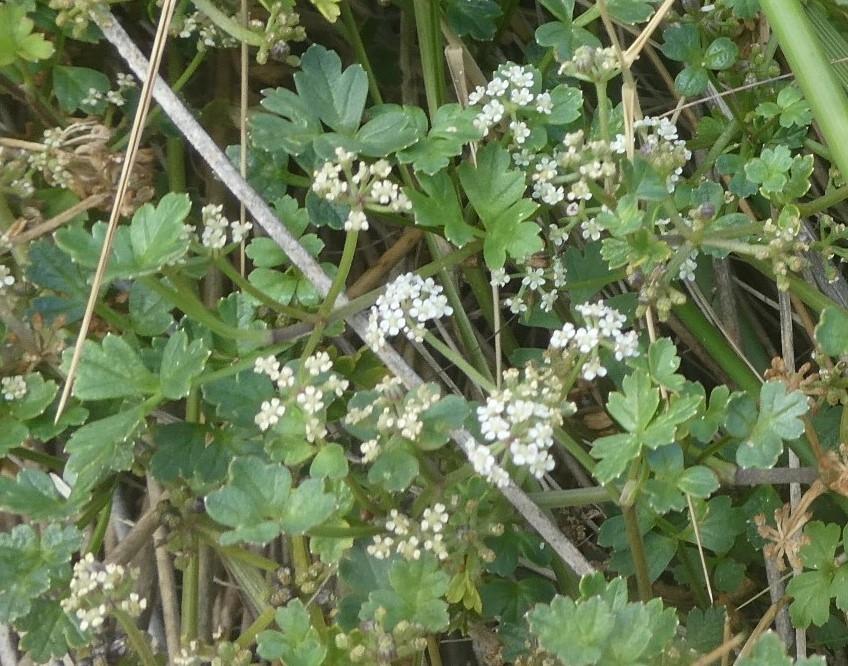
Sea Celery (photo by Gail)
The less common is Annual Celery – Apium annuum, with similar flowers but long, narrow leaves.

Annual Celery foliage
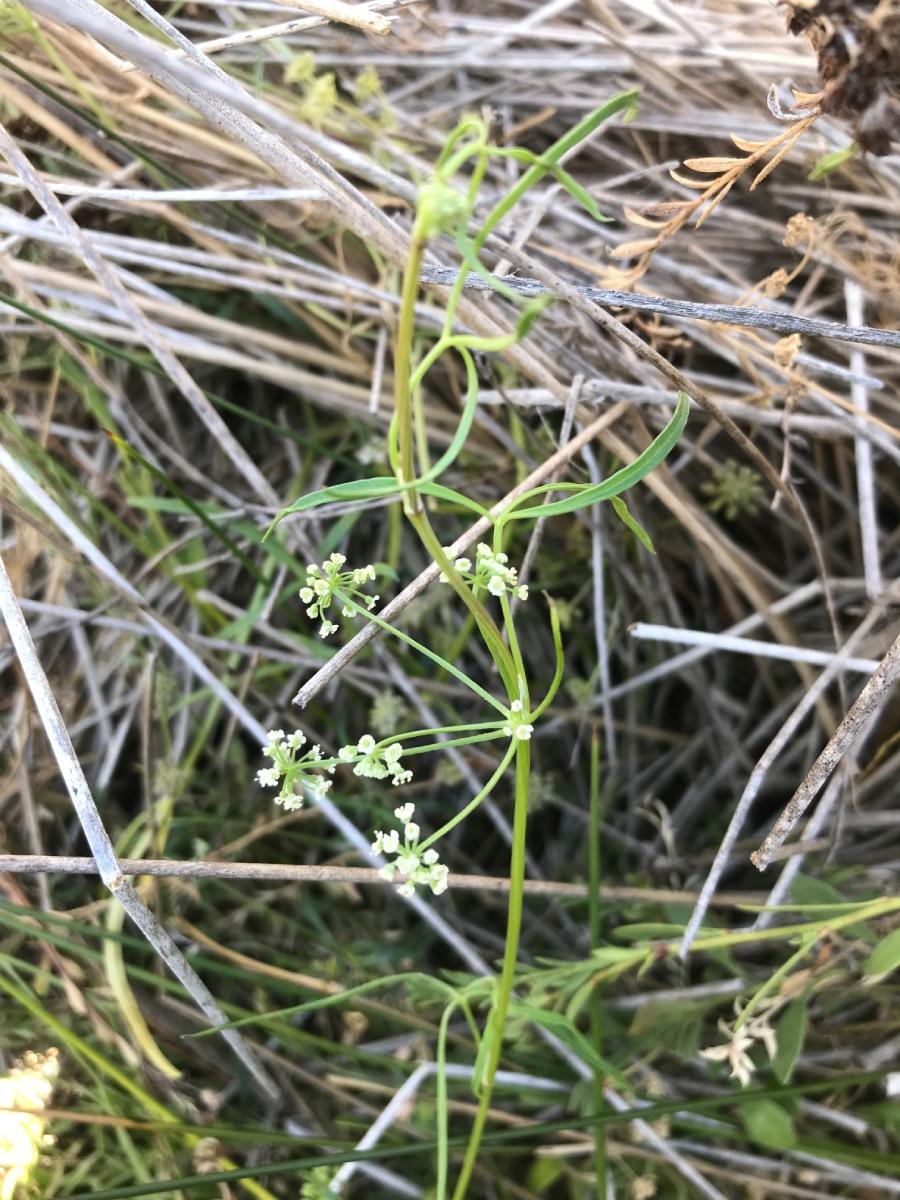
Annual Celery flowers
Some of the Seaberry Saltbush, Rhagodia candolleana subsp. candolleana was showing pale pink tinges to its leaves.

Pink tinged Seaberry Saltbush
This area is always interesting and has specialised plants not seen in other places; some seen but not included are Beaded Glasswort, Shiny Swamp-mat, Creeping Brook-weed and many others.
Christine Morrissey